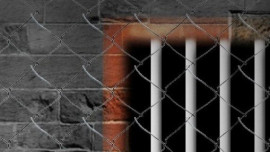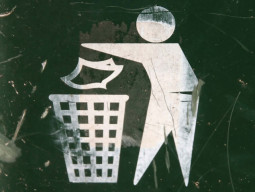Plan International Pakistan, a non-governmental organisation (NGO), on Thursday presented its Early Childhood Education (ECE) syllabus to the Punjab government.
Developed after a year’s research, the syllabus focuses on six ‘learning areas’ and includes lessons about personal and social development, language, creative arts, health and hygiene, basic mathematical concepts and general knowledge regarding the world around the child.
The syllabus called Barhtay Huay Qadam has been prepared by Nasira Habib, the founder and director of Khoj, an NGO that focuses on education.
The curriculum has been developed for children between four and five years of age.
Lessons include Aao kuch banain (Let’s make something), Khel ka waqt (play time), Ghar ghar khailain (Playing house) and Kahani ka waqt (Story time).
During a presentation at the launch, Habib said that each ‘learning area’ had a list of expected outcomes, which could be measured with the help of a list of competencies.
Habib told The Express Tribune that after the final draft was submitted in October 2011, pilot projects were run at seven community centres in Chakwal, Vehari and Islamabad.
Habib described the teaching method prevalent in most schools across the province as “regimented”. “Deep down, our society is [still] under the impression that you can’t teach without being strict or [without] corporal punishment,” she said. “We have incorporated elements of our heritage – local stories and games – in the syllabus,” she said.
Habib said that ideally 15 children should make up a ‘learning group’. If there are more than 20 students, she said, it would be best to divide them into two groups. The syllabus can be covered in 32 weeks of ‘active teaching’, with each week following a particular theme. The last week prepares the child for school, with teachers focusing on making the child ready for organised schooling, said Habib.
Habib stressed the role ‘caregivers’ play in early stages of learning. ECE teaching requires expertise, she said, “We underestimate the expertise required to impart education to such young children.”
She also noted the lack of designated ECE centres in the Punjab, “There are only 32 centres in 36 districts.” She said that implementation of early education would be difficult because “70 per cent of rural primary schools in the Punjab are single classroom schools.”
Habib said that while developing the syllabus, budgetary constraints were kept in mind.
Nadeem Irshad Kayani of the Punjab Directorate of Staff Development said according to the directorate’s assessment, an ECE classroom would cost between Rs25,500 and Rs47, 000, depending on activity props, classroom furniture.
Aslam Kamboh, the School Education Department secretary, said that since ECE was ‘material-based learning’ (needed educational toys and space), appropriate budgetary allocations were necessary.
He promised to issue a notification, which would make ECE classrooms and playgroup area a valid charge under the ‘Farogh-i-Taleem’ budget ensuring that it becomes an integral part of schooling activity.
Sofia Aziz, the learning adviser for Plan International said that such initiatives would help standardise pre-primary schooling. She also hoped that the NGO would launch the syllabus in Islamabad, Gilgit-Baltistan and Sindh later this year.
Rashid Javed, country director of Plan International Pakistan, said that they were going to send out the syllabus developed to all government schools in the province.
Published in The Express Tribune, May 11th, 2012.
COMMENTS (4)
Comments are moderated and generally will be posted if they are on-topic and not abusive.
For more information, please see our Comments FAQ

















Reading this article made me wonder why Plan International Pakistan (PIP) devoted so much time developing a ‘syllabus’ when there is a National Curriculum for Early Childhood Education 2007. This document was the result of a public-private partnership between the Ministry of Education (Curriculum Wing) and the Teachers’ Resource Centre (TRC).
Needless to say, the so-called ‘syllabus’ being proposed by PIP is a clear reflection of this document. I’m sure, if the Punjab Government sifts through their policies, they shall find it. This curriculum was launched in 2002 and later revised by TRC in 2006.
For those not familiar with the document, can find it at the link below. http://trconline.org/wp-content/uploads/2008/09/NCECE_2007.pdf
an excellent plan intended to build learning in formative years
Well intentioned and productive or not. Let a kid be a kid. They already get thrown into an unnatural system quick enough as it is. Yes, the things do include things a kid would do. But that's not the point. Let them have their natural inclinations go unhindered if they're not harmful. You're not supposed to create some image you want at birth. You're supposed to just guide them along.
Thirty years of research by Georgetown University Early Learning Project has shown that Sesame Street children TV show has made a huge positive impact on increasingly diverse American society.
One of the ways to broaden access to early childhood education is to have more programs like Sesame Street on radio and television which are widely available in both urban and rural settings.
http://www.riazhaq.com/2011/04/pakistan-to-adapt-sesame-st-children-tv.html